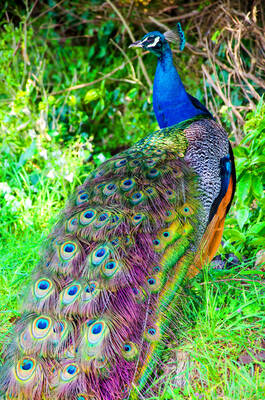Following an incident in Taoyuan in which a mother and father’s improper treatment of their seven-month-old baby girl left her covered with injuries, pediatrician Frank Wu of the Ministry of Health and Welfare’s Taoyuan General Hospital said that a baby’s head is very fragile as well as being big and heavy in proportion to its whole body, and because a baby’s neck is not yet capable of supporting its head, if the child is vigorously shaken, shoved or knocked, it can result in shaken baby syndrome. Wu therefore advised parents that when they are caring for their babies they should be especially careful about protecting their infants’ necks, and they must avoid doing things like tossing and catching them or rocking them too quickly.
Wu said that there is a network of blood vessels between the dura mater and pia mater – the hard and soft layers of the meningeal membranes that envelope the brain – and because babies have fragile heads and weak blood coagulation, if they are vigorously shaken it could tear the blood vessels so that they hemorrhage, causing elevated pressure and a lack of oxygen in the brain. Wu said that as many as 30 percent of babies who suffer from shaken baby syndrome will die, and a further 30 to 50 percent will be left with consequences such as learning, emotional or intellectual disabilities, epilepsy or cerebral palsy, some of which may not be discovered until they grow older and go to school, and these conditions will require long-term observation and treatment.
Wu said that there is generally nothing wrong with parents gently rocking their babies when they playing with them or soothing them, but they must absolutely avoid tossing and catching them or suddenly shaking them either forcefully or quickly, especially the latter, which is most likely to happen when a parent cannot soothe a baby who is crying, causing the parent to lose control of his or her emotions. Wu therefore advised carers that if they find themselves in such a situation, they can first ask someone else to watch over the baby, or else place it in a safe environment before walking away and taking a break until they are in a better mood.

Photo: American SPCC 照片:美國積極關愛兒童協會
(Translated by Julian Clegg, Taipei Times)
桃園一對父母離譜照護行徑,造成七個月大女嬰傷痕累累,衛生福利部桃園醫院小兒科醫師吳君山表示,嬰兒頭部相當脆弱且占身體比例大,因脖子尚無支撐能力,若遭劇烈搖晃、推打或重擊,都可能出現嬰兒搖晃症候群,提醒父母照顧時要注意特別保護頭頸部,避免拋接或快速搖晃孩子等行為。
吳君山說,腦部硬、軟腦膜間分布著血管,嬰兒因頭部脆弱且凝血功能較差,若遭劇烈搖晃恐撕裂血管引發出血,導致腦壓上升、腦部缺氧。嬰兒搖晃症候群死亡率高達三成,另有三到五成會留下學習、情緒、智力障礙,以及癲癇、腦性麻痺等後遺症,且有些症狀可能要等到長大就學才會發現,需要長期追蹤及治療。
吳君山表示,父母在逗弄、安撫孩子時,輕微緩和地搖晃一般是沒問題的,但絕對要避免拋接或是突然用力、快速地搖晃寶寶,尤其是後者,常發生在嬰兒哭鬧無法安撫而情緒失控時,提醒照顧者若有類似情形,可先換人照顧或將嬰兒安置在安全環境,到一旁稍事休息轉換情緒。
(自由時報記者鄭淑婷)

A: Apart from US singer Camila Cabello, Singaporean pop diva Sun Yanzi has two concerts scheduled at the K-Arena this weekend. B: Having debuted in 2000, Sun is now touring again to celebrate her career that has spanned over a quarter century. A: I like all of her 13 albums, but she hasn’t released one since A Dancing van Gogh in 2017. B: I hear that her shows will feature videos made by generative AI that will look back on her albums. A: Really? That’s awesome. Her music can always bring back fans’ great memories. A: 除了美國歌手卡蜜拉,新加坡歌后孫燕姿本週末將在高雄巨蛋嗨唱2場。 B: 哇2000年出道的孫燕姿,終於再度展開世界巡演慶祝出道25年! A: 她出的13張專輯我全都很喜歡,但自從2017年《No. 13作品––跳舞的梵谷》她就沒再出過專輯了。 B: 聽說演唱會還有生成式AI影片,回顧過去所有專輯的精彩片段。 A:

A: Wow, Taiwanese pop band Sodagreen just held two concerts in Kaohsiung to mark the 20th anniversary of their debut. B: I’m glad they’re continuing to perform, even after taking several long breaks. A: Canadian singer Elijah Woods also staged a show in New Taipei on Tuesday, followed by US singer Camila Cabello, who is set to rock Kaohsiung tonight. B: I love Camila’s global hit Havana. It was the best-selling digital single of 2018, according to the International Federation of the Phonographic Industry (IFPI). A: The singer with Cuban-Mexican heritage was born in Havana, and her music has been influenced by her roots. A:

Peacocks are among the most beautiful birds in the world. Their bright feathers and graceful movements have fascinated humans for centuries. These magnificent creatures belong to the pheasant family and are found in regions across Asia and Africa. Let’s explore peacocks’ unique characteristics and cultural significance. There are three main species of peacock: the well-known Indian peafowl, native to South Asia; the endangered green peafowl from Southeast Asia; and the rare Congo peafowl, found in African rainforests. Although the term “peacock” technically refers only to males, many people use it for both sexes. Male peacocks display their colorful tail feathers, which

An alarming increase in hearing problems among young adults has been linked to “Auditory Processing Disorder” (APD). Health experts warn that this issue could be partially associated with the growing use of “noise-canceling” headphones. APD occurs when the brain cannot properly interpret auditory information, despite one’s hearing ability being fully functional. This can lead to difficulties in understanding speech, particularly in noisy environments or when someone speaks quickly. People with this condition often need things repeated or take longer to respond in conversations. While these noise-canceling devices offer clear benefits in blocking external sounds, overuse may affect the